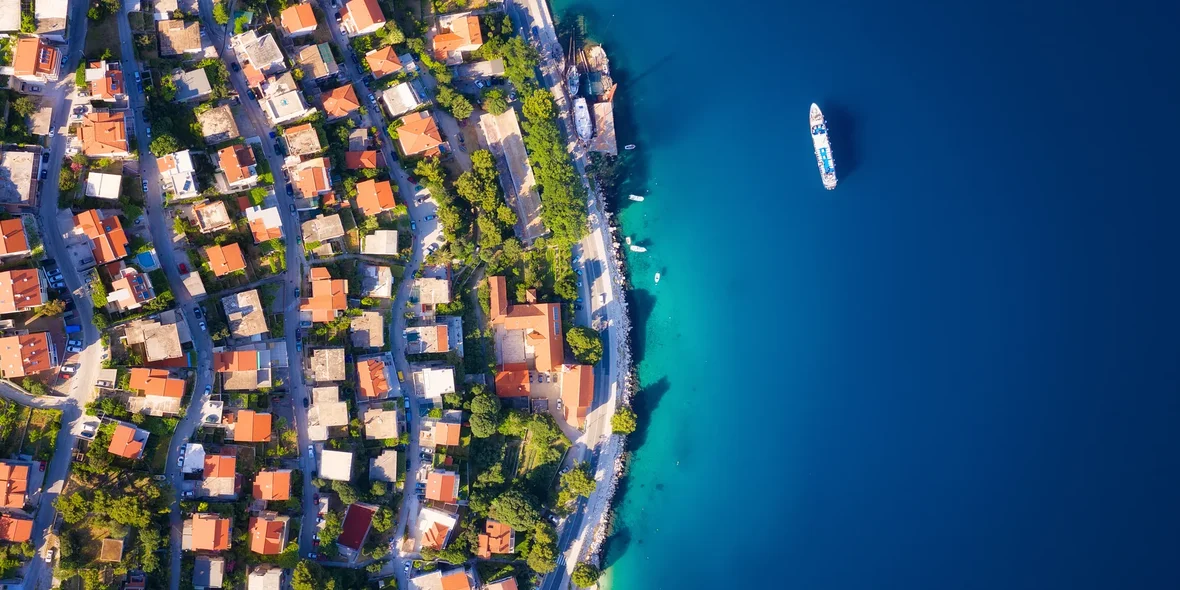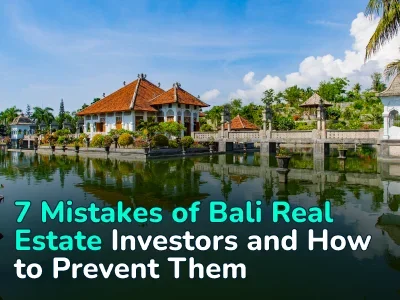
Top Islands Around the World Where You Can Buy Real Estate
At the beginning of the decade, seaside homes were considered an exotic purchase for vacation purposes, but by 2025 this segment has become one of the most stable and sought-after niches in the international property market.
An additional driver of this demand has been the transformation of the labor market. According to the Global Digital Nomad Report 2025, the number of people working remotely while constantly moving between countries has exceeded 40 million, with a significant portion preferring island regions offering mild climates and reliable internet infrastructure.
As a result, islands have ceased to be purely resort exotica. In this article, we will examine both the most popular and the less obvious destinations in the island real estate segment.
Why Island Real Estate Is in Demand
Investing in island properties is primarily attractive due to their higher rental yields compared to mainland assets. According to 2024 data, average rental returns in Southeast Asia and the Caribbean ranged between 6–12% per annum, while comparable mainland properties typically generated 4–6%.
A second important factor is the accessibility of property ownership for foreigners in some popular destinations. For example, in the Dominican Republic, Cyprus, Malta, and Mauritius, foreign buyers are permitted freehold ownership of land. This brings island real estate in these countries to the same level as the UAE, where similar freehold zones exist.
Perhaps the most significant factor, however, is the volume of tourist arrivals. The steady growth in tourism directly increases occupancy rates of rental properties, which in turn drives up rental prices and, consequently, the market value of the assets themselves.
Top 5 Destinations for Real Estate Investment in 2025
According to Savills World Research (2024) and Knight Frank, the most attractive destinations for private investors and developers in 2025 are Bali, Cyprus, the Canary Islands, Malta, and the Dominican Republic. Below, we examine the key strengths of each market.
Bali (Indonesia)
Bali rightfully holds the title of the flagship island real estate market. Average villa rental yields reach 10–12% per annum, and although direct land ownership by foreigners is restricted, land prices grew by 9.3% in 2024, while the share of foreign buyers increased by 15%.
Key drivers of demand:
- Second Home Visa — residency for up to 10 years with a minimum investment of $130,000;
- High demand from digital nomads and expatriates — particularly in Canggu, Ubud, and Uluwatu;
- Modern infrastructure — numerous coworking spaces, advanced service sector, and reliable internet.
Cyprus
Although Cyprus’ real estate market showed only moderate growth in 2024, it remains one of the priority destinations for investors in 2025 due to its proximity to Europe and full EU membership.
Market characteristics:
- Rental yield: 5–7% per annum;
- Freehold ownership permitted for foreigners;
- Average apartment price: €180,000—250,000 (villas: €300,000—600,000);
- Premium seafront properties start from €800,000;
- Average payback period: 10–12 years;
- Property tax abolished since 2017.
Canary Islands (Spain)
The Canary Islands are one of the few regions where the tourism economy directly sustains the property market. In 2024, the islands welcomed over 13.9 million tourists, and foreign buyers accounted for 31% of all transactions.
Sustained rental demand from Europeans—particularly Germans and Scandinavians—prevents market overheating, keeping price growth moderate at 5–7% annually. All properties are registered within the EU legal framework, minimizing fraud risks.
A notable trend in 2025 is the expansion of the digital nomad segment. Tenerife, Gran Canaria, and Lanzarote are actively developing infrastructure for remote work—coworking spaces, coliving hubs, and stable internet. As a result, average rental durations have increased to 3–5 months, gradually shifting the market toward mid-term rentals.
Malta
Foreign buyers account for a significant share of Malta’s real estate demand. To accommodate them, the government established Special Designated Areas (SDA), where property purchases are allowed with minimal restrictions.
Thanks to this, foreign investors consistently represent 25–30% of all transactions. The average property price rose by 8.1% in 2024, while rental yields remained at 5–6%, creating a favorable environment for rental investment rather than owner-occupation.
Other zones (Non-SDA) are also open to foreigners but require an Acquisition of Immovable Property (AIP) Permit. Moreover, properties purchased in these areas must be used exclusively as private residences, with no rental rights.
Dominican Republic
The Dominican Republic represents one of the Caribbean’s most dynamic real estate markets and remains among the few where foreigners enjoy equal property rights with local citizens. By 2024, foreign buyers accounted for over 60% of all transactions, predominantly from the U.S., Canada, and Europe.
Average property prices grew by 12%, while rental yields stabilized at 8–10% per annum. Transactions are commonly conducted in U.S. dollars, and property acquisition also provides eligibility for residency through investment.
Second-Tier Destinations
The main destinations attract the majority of real estate investment, but they are not the only ones. There remains a significant layer of second-tier island markets, which may be less popular but offer a lower entry threshold — properties can still be found for under €150,000. This category includes:
- Northern Cyprus (TRNC). There are interesting properties here; however, the legal status of the territory is not recognized by most countries, which creates certain risks. For example, in 2025 the authorities of the Republic of Cyprus increased prosecution of transactions involving Greek Cypriot property in the north.
- Mauritius. Foreigners can purchase property under approved schemes (IRS, RES, PDS, Smart City, and G+2 for apartments). A purchase of $375,000 or more in an approved project grants residency rights, usually valid for the duration of property ownership.
- Seychelles. For foreigners, long-term leases of 60–99 years are the norm; transactions exceeding two years require government approval under the Immovable Property (Transfer Restriction) Act. Full ownership is possible, but such cases are extremely rare.
- Cape Verde (islands off the west coast of Africa). Foreigners are allowed to freely purchase property. The low entry threshold and shortage of apart-hotels create potential for growth in short- and mid-term rental yields.
- Zanzibar (Tanzania). The island is rapidly developing its tourism sector, prioritizing large investment projects in tourist real estate.
- Philippines (Palawan, Siargao Islands). Foreigners cannot own land but may own apartments (up to 40% foreign share in condominiums) or lease land long-term (up to 50 years).
- Azores (Portugal). The market is attractive for mid-term rentals.
Risks of Investing in Island Real Estate
One of the most significant distinctions between island and mainland real estate is exposure to extreme natural hazards — including storms, hurricanes, earthquakes, and tsunamis. In many island regions (the Caribbean, Atlantic coast, and Indo-Pacific areas), hurricanes and tropical storms are a structural and recurring threat.
For instance, Storm Beryl, which struck the eastern Caribbean, caused an estimated USD $510 million in insurance losses in the private sector of the region’s eastern zone — and it was not an isolated event. An even more devastating case was Hurricane Dorian (2019), which hit the Bahamas, inflicting $3.4 billion in total damage.
Islands are also exposed to earthquake and tsunami risks. Even when an epicenter occurs offshore, the resulting waves can reach coastal zones with destructive force. In early 2025, a magnitude 7.5 earthquake off the coast of the Philippines triggered a tsunami and caused extensive property damage along the shore.
Insurance companies are often reluctant to operate in high-risk zones, meaning that standard insurance policies typically exclude coverage for earthquake- or tsunami-related damage, particularly if caused by flooding, hydraulic pressure, or ground instability. Specialized disaster coverage can cost two to three times more than conventional insurance.
Summary
Island real estate can deliver higher returns than mainland assets, driven by tourism, limited supply, and growing rental demand. However, these returns are accompanied by tangible risks such as climatic threats, legal nuances of ownership, and dependence on local infrastructure.
Yet, analytics indicate that such risks do not deter investors; in fact, they often enhance the sector’s appeal due to strong yield potential. According to CBRE forecasts, by 2027, the average property value on key islands is expected to rise by 7–10%, while rental yields are projected to remain within the 8–12% annual range.
Author
I write informative articles about real estate, investments, job opportunities, taxes, etc.


















